Telstra will start selling the Motorola XOOM tablet, based on Google Android 3.0 "Honeycomb" software, in Australia from 24th May.
The $879 upfront price seems a little high against the iPad 2 16GB/Wi-Fi introductory price of $579, but a like-for-like comparison is the iPad 32GB with Wi-Fi and 3G, which is $839.
However, unlike the iPad, the XOOM is being priced by Telstra very much as a tablet+3G plan device -- so you can actually get it for nothing upfront, and just pay a monthly fee, as follows:
Keep on reading for our pre-release analysis on how the XOOM compares to the iPad 2. However, we've also got a review unit in our hands, so we'll be giving it a thorough going-over on the weekend and giving it the full Australian Business Traveller review treatment from next week.
Motorola XOOM vs iPad 2
How does it compare to the market-leading iPad 2 and the many benefits it has for business travellers?
If Timo Brouwer, MD of Motorola Mobility Australia, is to be believed, "Motorola XOOM is the next generation of tablet, and the one after that."
Does the sales pitch meet reality? Not really -- in fact, the XOOM is mostly line-ball with the current generation of tablets, exceeding the iPad 2 in some areas but not in others.
However, it is one of the first tablets on the market to be designed around the tablet-specific Android 3.0 software, which sets it apart from the mish-mash of earlier Android tablets that were based on smartphone versions of Android that had been stretched to suit the larger screen size.
Google is promising that Android 3.0 provides a tablet experience that makes much better use of screen real estate. We wrote about how Android 3.0 compares to the iPad here: iPad 2 vs Android 3 - the 10 best new tablets for travellers.
Screen size and quality
The XOOM has a 10.1 inch display -- a little bigger than the iPad's 9.7 inch one, and it is technically high definition (1280x720 pixels), where the iPad's isn't (1024x768). In day-to-day usage, these spec differences are unlikely to make much of a difference.
Winner: XOOM
Weight and size
Unsurprisingly, given Apple's mastery of making things smaller, the XOOM is a bit thicker and heavier than the iPad 2. It weighs 730g against the iPad 2's 608g (17% heavier), and it is 12.9mm thick, against the iPad 2's 8.8mm (32% thicker). The original iPad was 13.4mm, so the XOOM is still no heiffer.
Winner: iPad 2
Storage
Unlike the iPad, you won't get a choice of how much storage you want -- it just comes with 32 GB of storage (admittedly, that is ample for most people). There's also a micro-SD card slot for you to add extra storage if you need it.
Winner: iPad 2 (though in the unlikely event that XOOM 32GB ends up being cheaper than the iPad 2 16GB, we'd certainly revise that)
Google services
Like all Google Android-based devices, it has excellent integration with Google services like Gmail, Maps and YouTube -- but generally no better than what's available on the iPad.
Winner: draw
Mapping
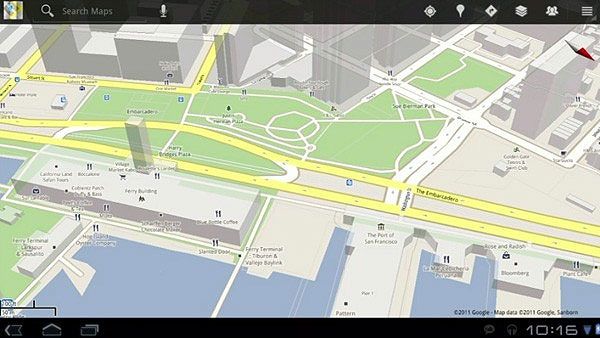
One area where the XOOM is a clear winner over the iPad is in mapping and navigation. While there are any number of great navigation apps for iPhone and iPad, they all cost money -- quite a lot of it. For example, TomTom for iPhone costs $89.99 -- and you need to buy a special cradle to get good GPS tracking speed.
On Android, Google provides free turn-by-turn voice-guided satellite navigation.
The new Google Maps 5 for Android, also allows maps to be downloaded and stored in memory, so they can be used while there is no Wi-Fi or 3G mobile network connectivity.
This is a huge plus for travellers wanting to use maps on the tablet to navigate around a foreign city, but don't want to pay data roaming rates of up to $20/MB for the privilege.
Winner: XOOM
Apps
Where the XOOM falls down against the iPad is in the availability of apps -- there are only a handful of apps made specifically for Android tablets, but there are now more than 60,000 designed for iPad.
On the other hand, which apps you get to used isn't decided by Google, whereas Apple vets and approves every app available for iPad, often making controversial and inconsistent moral judgements.
Winner: iPad
Entertainment
The XOOM has an HDMI port built in, which means all you need is a $2 HDMI cable to connect it to an LCD or Plasma TV to play movies on the big screen -- ideal for use at home and in hotels.
The iPad 2 can also be connected to a TV, but you have to buy the iPad HDMI adaptor, which costs another $45.
Despite this additional cost for the iPad, it's outweighed by the fact that Android tablets lack a good movie/TV show download service as the iPad has with the iTunes Store.
There are no legal options that Australian Business Traveller is aware of for buying or renting movies and TV shows on Android devices, so you'll have to rely on catch-up TV services, streaming TV, illegal downloads, or shorter videos on YouTube.
Winner: iPad 2
Camera & video chat
The rear camera on the XOOM is higher quality than the iPad 2 camera -- it has a five megapixel resolution, against the iPad 2's exceptionally bad 0.92 megapixel camera.
It's hard to understand why Apple penny-pinched so much on the iPad 2 camera, when the iPhone 4 has an excellent five megapixel one.
On the flip-side, the iPad 2 has Apple's excellent FaceTime video chat software, which makes it extremely easy to set up a video chat between the iPad, iPhone 4s, and Macs. There's also Skype for iPhone which does video chat now (though there's no iPad specific version, so when you use it on the iPhone you just get a zoomed up version of the iPhone app.)
On Android, there's Google Talk for video chat, and various third party apps like Fring! and Oovoo, but the general user experience for video chat isn't as smooth as Apple's implementation.
Winner: XOOM
The home-screen
The Android 3.0 homescreen on the XOOM is customizable, with moveable widgets, notifications and tabbed browsing, while the iPad 2 continues to use Apple's simple grid of icons to launch apps.
Which approach you prefer is a matter of taste, but it's certainly hard to argue that the iPad's grid of icons is always neat and immediately easy to use, whereas the Android homescreen has the potential to be more informational, but also more confusing.
Winner: draw
Web browsing
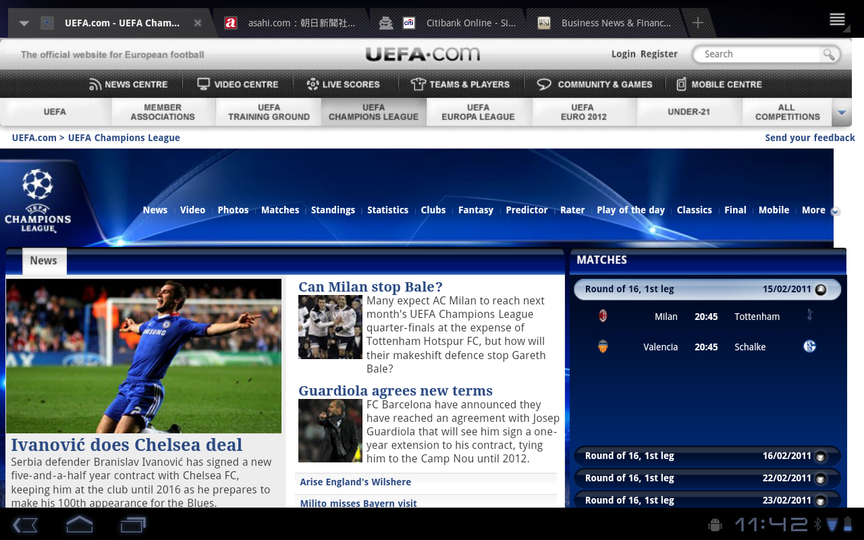
Apple's Safari web browser on the iPad is very fast to display pages and easy to use, but has two areas that are irritating -- it can't display pages that include Flash animations, and it only has a limited ability to remember usernames and passwords (with no ability to integrate with popular password managers like LastPass and 1Password.)
The browser on Android 3.0 tablets like the XOOM has the ability to play Flash animations once the beta version of Adobe Flash Player 10.2 is installed from Android Market, and the Chrome browser can sync bookmarks and usernames/passwords with the desktop equivalent.
Winner: XOOM
Battery life
Both the XOOM and the iPad 2 advertise 10 hours of battery life. We know that the Apple figure is realistic, with reviewers consistently achieving it in tests, but it will take some hands-on time with the XOOM to find out how it compares.
Winner: to be announced
Price
iPad 2 starts at $579, but a fair comparison with the XOOM is the 32GB Wi-Fi and 3G model, which costs $839.
The pricing for the XOOM hasn't been released by Telstra yet -- we'll update this article and declare a winner when it is!
Winner: to be announced
The final tally
The results are four wins for XOOM, four wins for iPad, two draws and two "to be announced!"
Of course, which device is right for you is very much down to what features you place high priority on, but our tally does show that the XOOM is highly competitive with the iPad 2, and should give you pause for thought before simply choosing iPad 2 by default.
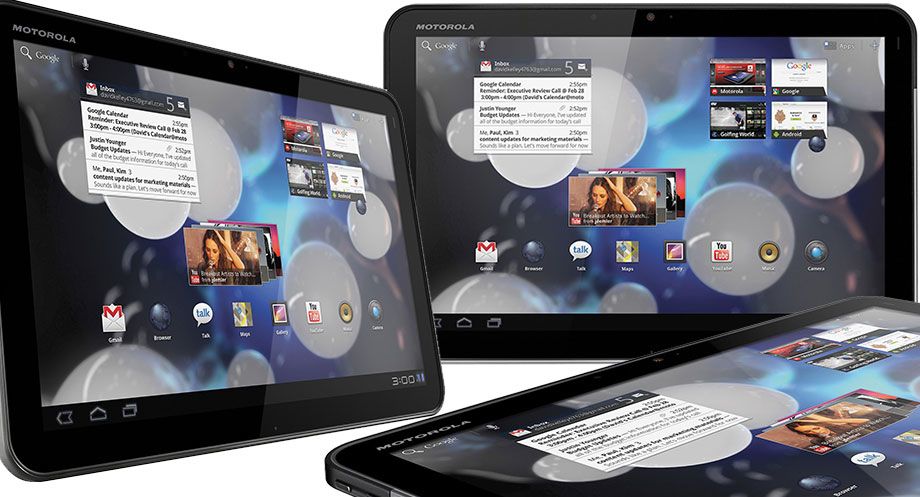
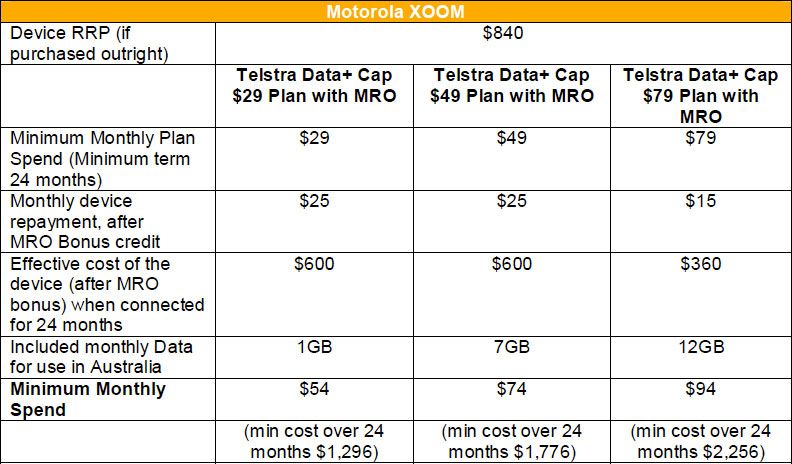
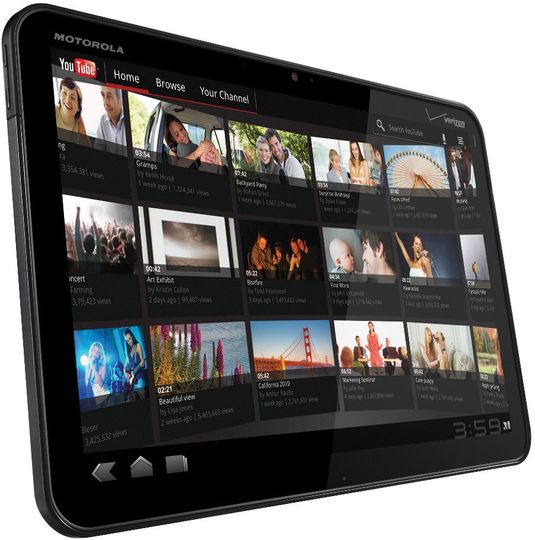
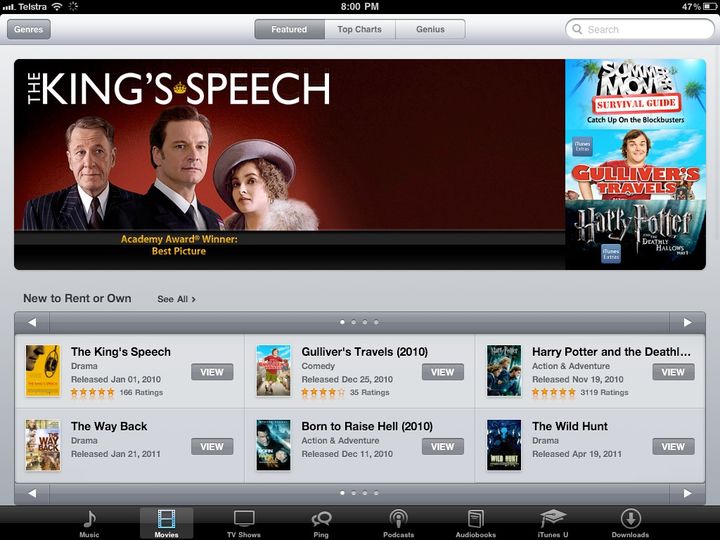
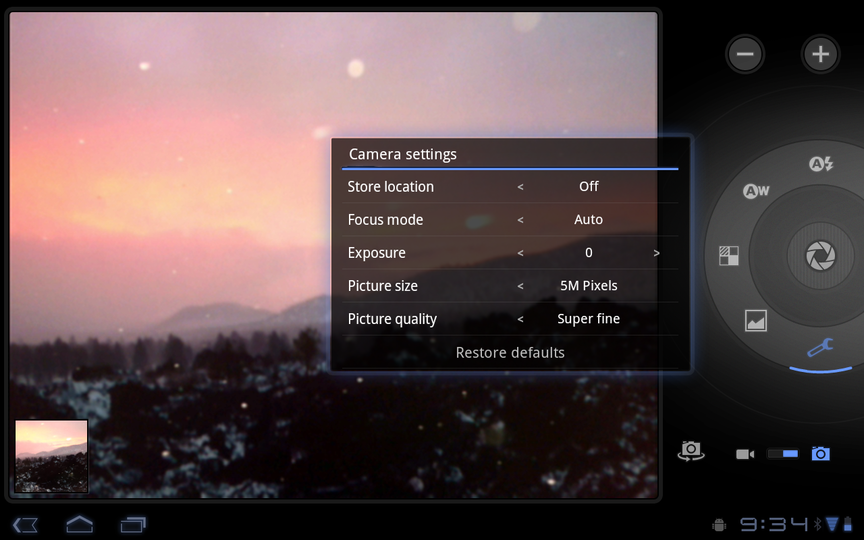
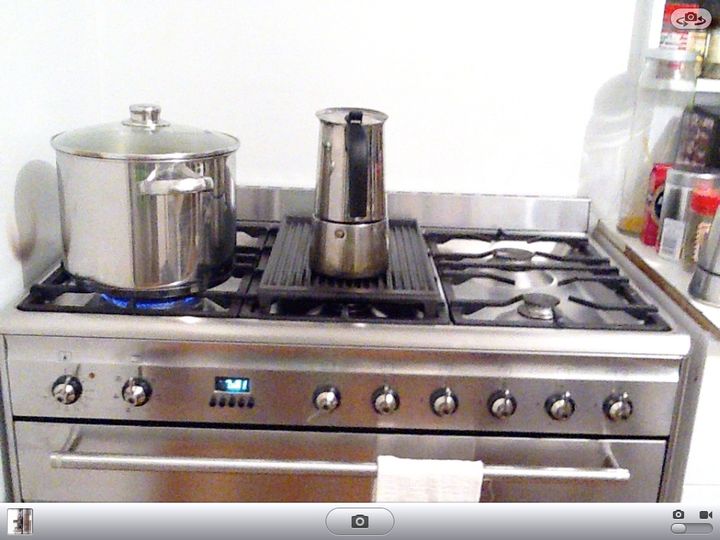
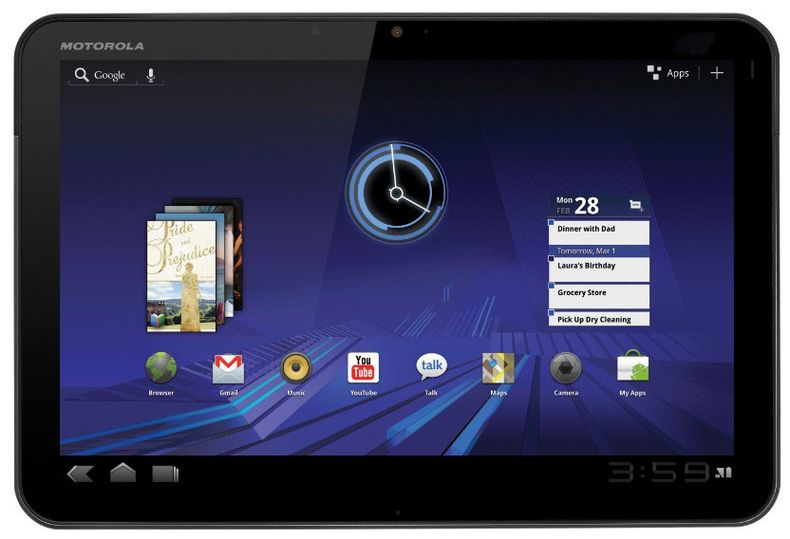
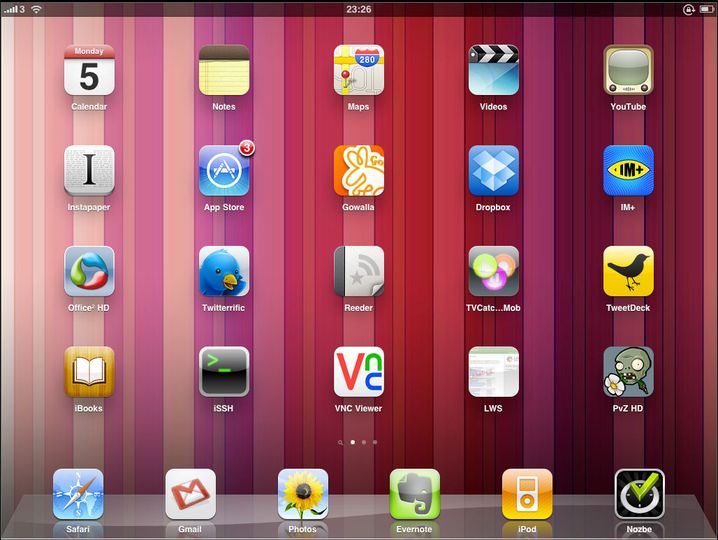

Hi Guest, join in the discussion on Telstra launches Motorola XOOM tablet in Australia